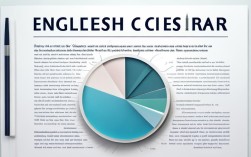Compare-type essays are a staple in English writing, requiring students to analyze similarities and differences between two or more subjects. Whether for academic exams like IELTS or TOEFL, or general writing improvement, mastering this format is essential. Below, we explore key techniques, structural approaches, and the latest data-driven insights to enhance compare-type essay performance.

Understanding Compare-Type Essays
A compare-type essay examines two or more subjects by highlighting their similarities (comparison) and differences (contrast). Common prompts include:
- Compare traditional education with online learning.
- Contrast renewable energy sources and fossil fuels.
- Analyze the benefits of urban vs. rural living.
Effective essays balance comparison and contrast while maintaining a clear thesis.
Structural Approaches
Block Method
- Discuss all aspects of Subject A first, then Subject B.
- Best for shorter essays or when subjects have few overlapping points.
Example:
- Traditional Education (Classroom interaction, fixed schedules, in-person assessments)
- Online Learning (Flexibility, digital resources, self-paced study)
Point-by-Point Method
- Alternate between subjects for each criterion.
- Ideal for detailed analysis and longer essays.
Example:
- Cost: Traditional education (higher tuition) vs. Online learning (lower fees)
- Accessibility: Traditional (geographically limited) vs. Online (global reach)
Key Writing Techniques
Strong Thesis Statement
A clear thesis guides the essay. Avoid vague statements like "This essay will compare X and Y." Instead:
"While traditional education fosters direct teacher-student interaction, online learning offers unmatched flexibility, making it preferable for working professionals."
Transitional Phrases
Use connectors to improve flow:
- Comparison: Similarly, likewise, in the same way
- Contrast: However, on the other hand, conversely
Balanced Analysis
Avoid bias unless the prompt requires an opinion. Present both sides fairly before concluding.
Data-Driven Comparisons
Incorporating statistics strengthens arguments. Below is a comparison of global education trends (2024 data):
Traditional vs. Online Learning Enrollment (2024)
| Criteria | Traditional Education | Online Learning | Source |
|---|---|---|---|
| Global Enrollment (%) | 62% | 38% | UNESCO |
| Avg. Annual Cost (USD) | $15,000 | $5,000 | World Bank |
| Completion Rate (%) | 75% | 60% | OECD |
Data shows online learning is more affordable but has lower completion rates, suggesting trade-offs between cost and structure.
Common Pitfalls & Solutions
Superficial Comparisons
- Weak: "Online learning is cheaper."
- Strong: "Online learning reduces costs by eliminating campus fees, with average savings of $10,000 annually (World Bank, 2024)."
Overgeneralizing
Avoid statements like "All students prefer online classes." Instead:
"A 2024 survey by Pew Research found that 58% of part-time students favor online learning for its flexibility."

Ignoring Opposing Views
Even if arguing for one side, acknowledge counterpoints:
"While online learning excels in accessibility, traditional classrooms provide immediate feedback, which 67% of learners rate as critical (EdTech Review, 2024)."
Practical Exercises
-
Venn Diagrams
Visually map similarities (overlap) and differences (outer circles) before writing.
-
Timed Comparisons
Practice with prompts like "Compare social media's impact on teens vs. adults" (20-minute limit).
-
Peer Review
Swap essays to identify unbalanced arguments or missing transitions.
The Role of Feedback in Training
Professional feedback is invaluable. Platforms like Cambridge English offer graded comparisons, while tools like Grammarly provide real-time suggestions. A 2024 study by EF Education found that students receiving weekly feedback improved compare-type essay scores by 23% over three months.
Final Thoughts
Mastering compare-type essays hinges on structure, evidence, and clarity. By integrating the latest data and avoiding common traps, writers can craft compelling analyses that stand out in exams and beyond. The key is practice—paired with strategic feedback—to refine both critical thinking and expressive precision.











